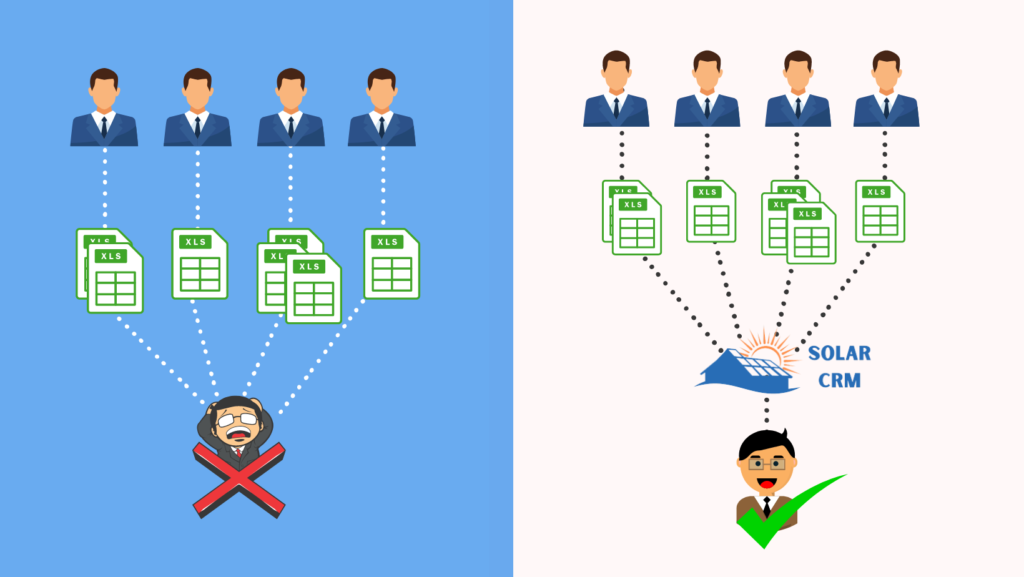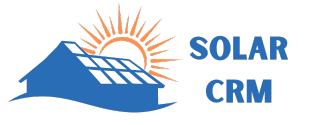With the increasing demand for sustainable energy options, solar power has emerged as a top choice. Now, more and more people are adopting rooftop solar installations, thus, making our energy sources more environmentally friendly and sustainable.
While there are multiple aspects responsible for the successful execution of solar projects, the material management program is the crucial one.
Understanding the challenges and solutions in material management can help you with proper execution.
In this blog post, we’ll explore the ins and outs of material management, the hurdles you may encounter, and how the right solar project management software can save the day. Let’s get started!
The Material Management Process in Rooftop Solar Installations:
A. Procurement:
Whenever a new solar project is undertaken by a company, the process always begins with assessing the requirement of materials for the project and checking their availability within storage.
While there is no complexity in tracking the material requirement of a single project, managing it for multiple projects is a bit overwhelming.
Each project may have unique requirements, and coordinating with multiple suppliers can be complex. This can lead to delays in material acquisition and project timelines.
Moreover, this data is noted in different Spreadsheets for different projects. Juggling between these sheets for maintaining proper inventories from different suppliers for multiple projects becomes frustrating for solar project managers.
On top of this, as the project manager is always traveling to different sites capturing the information of any requirement on time is essential for avoiding any delays in the procurement and hence installation. Or else, it can hamper the budget of the overall project as well as affect the cost of other projects too.

Solution:
A software with a mobile-friendly UI that connects all project managers and the purchasing team in one place. This allows the sharing of information on a centralized dashboard, enabling better forecasting of material needs and more effective procurement decisions. Thus, making the process hassle-free by avoiding multiple Excel sheets.
Moreover, the mobile-friendly UI allows the project manager to capture the material requirement immediately even when on the move.
B. Inventory Management:
Inventory management in solar projects can be quite challenging due to the multiple projects happening simultaneously.
Moreover, each project has its own unique material requirements from solar panels, and wires, to cables in different quantities on different dates and across different locations.
These materials are typically sourced from different vendors.
In order to allow the project manager to efficiently coordinate with different suppliers to ensure timely dispatch and delivery, the store manager should be able to forecast the availability of materials accurately.
But does the store manager have enough knowledge to forecast the accurate availability of materials?
Does he have the right technology to track the material information seamlessly?
If not, he will end up stalking extra material by not being able to forecast accurately, thus eating up the project budget by getting the cash locked in needless inventories.
Solution:
A software that can consolidate the inventory data and material data to allow accurate forecasting of the material availability. This will enable timely deliveries and proper usage of the procurement budget without getting your cash locked in needless inventories.
C. Transportation:
Transportation plays a crucial role in ensuring that solar materials arrive at the installation site on time and in good condition. However, coordinating transportation for multiple projects can become challenging, especially when dealing with different suppliers, delivery schedules, and project locations.
When transportation delays occur, it can result in idle labor, where workers are waiting for the materials to arrive, leading to a waste of resources thus escalating costs.
As a result, the overall project budget can be hampered.
In addition, delays in the installation process can affect the overall project timeline, potentially leading to customer dissatisfaction and financial consequences.
Solution:
The software should be able to track the updates of material delivery and capture any delays in material delivery. It should be smart enough to notify the affected project managers on time so that they can be aware of the delays.

By having a clear overview of transportation schedules for multiple projects, the project managers can communicate changes or updates to stakeholders promptly, ensuring transparency and efficient decision-making.
D. Return Logistics and Waste Management:
When it comes to roof-top-solar installation, taking additional material on-site is a common practice to ensure on-time project execution and avoid delays due to material unavailability.
However, coordinating the return of unused materials to suppliers within the required time frame can be challenging. Project managers need to track the status of unused materials, identify which items are eligible for return, and manage the process to avoid delays or miscommunication.
Solution:
A software with a centralized dashboard where project managers can track the inventory of unused materials. This allows them to have real-time visibility of the quantities, locations, and how the materials are being used on-site.
The Role of Solar Project Management/ERP Software in Material Management Program
Central dashboard for all projects:
The software provides a centralized dashboard where project managers can access and manage material-related information for all their projects in one place. This simplifies the monitoring and coordination of materials across multiple installations, improving overall efficiency and organization.
Real-time tracking:
With the software’s real-time tracking capabilities, project managers can monitor material quantities, locations, and usage as the projects progress. This allows for better inventory management, proactive decision-making, and the ability to address any potential issues or delays promptly.
Reliable accessibility with mobile-friendly UI:
Solar project management software is designed to be accessed remotely, allowing project managers to update and stay updated on material management even while on the go. The mobile-friendly user interface ensures ease of use and seamless navigation, enabling quick access to critical information from anywhere at any time.
Material requirement forecasting:
Another crucial aspect of solar project management software is its ability to assist with material requirement forecasting. By analyzing historical data, project specifications, and project timelines, the software can provide valuable insights and predictions on the materials needed. This aids in effective planning ensuring that the right materials are available when and where they are needed. Thus, enabling better inventory management and avoiding shortages or excesses of materials.
Conclusion:
To ensure successful solar installation projects, it is essential to effectively manage materials. By utilizing solar project management software, project managers can overcome various challenges in a material management program.
The software provides centralized control, real-time tracking, mobile accessibility, and on-time reminders. This simplifies processes, improves efficiency, and helps control costs while promoting sustainability.
Embracing solar project management software is the key to a successful material management program and achieving success in solar projects. So, make the most of this valuable tool and take your rooftop solar installations to new heights!
